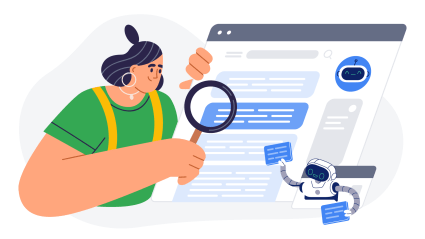Day 1 of last week’s sold-out SMX Advanced conference featured a Q&A with Google spokesman, Gary Illyes. Covering a series of hot-button SEO topics in 2016, attendees of the conference gleaned insights into Google’s elusive Artificial Intelligence (AI) system, RankBrain.
SEOs started hearing about RankBrain in early 2015, and by October, had Bloomberg confirmation of its use – for roughly 15% of queries. Eight months later, the AI system is used for 100% of Google searches – making the need to optimize all the more important.
But First…What Is RankBrain?
RankBrain is a machine-learning AI system used by Google to make semantic sense of users’ complicated or ambiguous search queries. Born out of Google’s 2013 Hummingbird update, which aimed to incorporate semantic search into its search engine, RankBrain is less of a replacement and more of a working part to the Hummingbird algorithm as a whole.
Machine-Learning Artificial Intelligence… Sounds Creepy.
Maybe so. But despite RankBrain’s post-apocalyptic Sci-Fi name, it’s really not that creepy.
When we say that RankBrain is machine learning, we mean that its algorithm is designed to recognize and store patterns in user searches – between what is typed and the actual intent (gauged by the landing page chosen). When a similar query is searched in the future, this stored information is applied to serve the most helpful results to users.
All of RankBrain’s learning is done offline. By feeding the AI system batches of historical searches, it is able to make future semantic-predictions from the information. Searchengineland.com describes it as a kind of “learn-offline-test” cycle.
RankBrain’s algorithm works in stark contrast to Google’s older ranking algorithms, which relied heavily on exact and partial match keyword queries.
Take, For Example, The Query…
How to get to Wpromote? Without using any variation of the keywords: “driving directions” or “Chicago to El Segundo”, Google knows that I probably mean…
I want the quickest possible driving directions from my current location (the Chicago, IL office) to our El Segundo, CA office.
Indeed, Google’s top result is US map that includes not only driving, but also public transportation, walking, and biking route options from our Chicago office (my current location) to our El Segundo office.
Cool. So Let’s Talk Ranking Signal & How To Optimize.
RankBrain is now Google’s third-most important PageRank signal. So yeah, going out of your way to optimize for this is important. Here are three tips for getting started:
1. Seriously, stop keyword stuffing.
RankBrain’s strong emphasis on semantic meaning versus traditional exact match keywords makes it even MORE difficult for black hat SEO tactics to perform well on SERPs.
2. Move your focus (even more) on the user.
I’m talking about both in UX design and in custom content. Google cares about providing quality results to its users. If you do this, your site will be rewarded with higher rankings. Plus, your customers will be happy too!
3. YES! Keywords are still hugely important.
Google’s algorithm is constantly improving its understanding of users’ intent, which has lead many SEOs to emphasize a more topic-based research strategy over traditional keyword research.
The fact is, there are still noticeable differences in SERP results with even tiny tweaks to long-tail keywords (i.e., “search marketing agencies in LA” vs. “search marketing agencies in Los Angeles.”) Rand Fishkin, Co-Founder of Moz, suggests using both topic and keyword-based strategy in order to yield the best results. He refers to this a “hybrid model.”
Like what you read? Wpromote has an entire section of its blog dedicated to the latest happenings at Google. Check it out here.






Responses